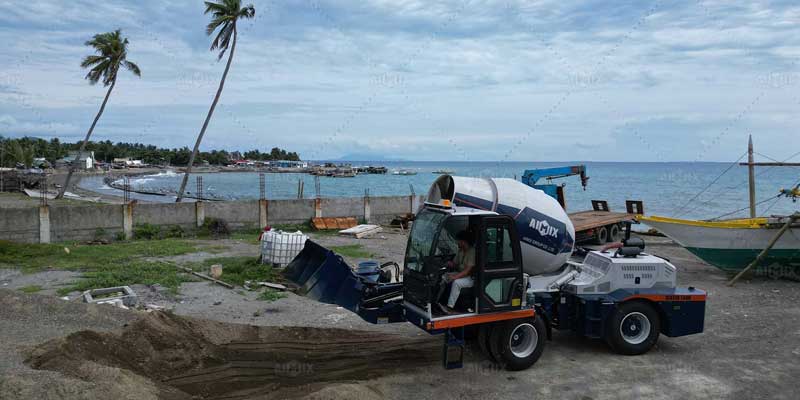
Discover how self loading cement mixers boost efficiency, reduce waste, and ensure precision in farmhouse renovation projects.
Renovating a farmhouse is an exercise in craftsmanship, endurance, and resourcefulness. These projects often unfold in remote locations where logistical hurdles are amplified and traditional concrete delivery methods become impractical. In such settings, the self loading cement mixer emerges not just as a convenience, but as a transformative solution. Combining mobility, automation, and batch-on-demand capabilities, this machine seamlessly aligns with the operational challenges of rural renovation work. Its versatility empowers construction crews to deliver precision pours and minimize waste—an indispensable advantage when every mix counts and deadlines are tight.
Unlike static batching plants or transit mixers that rely on proximity to concrete supply, the self loading cement mixer takes production directly to the jobsite. Built with robust 4×4 drivetrains, high ground clearance, and heavy-duty tires, these mixers traverse rugged farm roads, sloped pastures, and uneven terrain without compromising stability. This eliminates the need for expensive road improvements or flat staging areas, dramatically accelerating project timelines.
For remote farmhouses—often miles away from the nearest ready-mix plant—this mobility translates into operational independence. No more waiting on third-party deliveries or coordinating fleet availability. Instead, one operator in a self loading cement mixer can produce and pour on-demand, at the exact point of use, within minutes.
Time efficiency is further amplified by the self loading cement mixer’s integrated functionality. Equipped with a hydraulically controlled loading shovel, it scoops raw materials like cement, sand, and aggregates directly into the rotating drum. Water is then precisely injected through calibrated tanks, ensuring consistent ratios.
This on-board batching process removes the margin for human error inherent in manual mixing. More importantly, it compresses what would be a multi-step process into a single seamless operation. Within 15 minutes, the machine can produce a uniform concrete mix and begin pouring, reducing downtime and increasing productivity on every shift.
Farmhouse renovations often involve restoring stone walls, foundation footings, and rustic surfaces where appearance and durability must go hand-in-hand. A poorly mixed batch not only risks compromising structural integrity but may also disrupt the aesthetic harmony of heritage architecture.
Self loading mixers mitigate these risks through digitally regulated mixing systems. Automated load cells and programmable logic controllers (PLCs) monitor and adjust material proportions in real time. This level of accuracy ensures every cubic meter of concrete meets targeted slump values and strength grades.
One of the quiet cost drivers in renovation projects is over-ordering or discarding excess concrete. With traditional methods, project managers often batch in advance, overcompensating for unexpected delays or changes in pour volume. These inefficiencies accumulate over time.
The self loading cement mixer allows for just-in-time production in precise quantities. By matching output to real-time demand, it dramatically reduces material surplus and eliminates the environmental burden of hardened waste. For farmhouse restoration projects where budgets and ecological sensitivity run high, this lean operation model delivers measurable impact.
At the heart of the self loading concrete mixers‘ design is the concept of streamlined labor. Traditional concrete operations may involve separate personnel for batching, transporting, and pouring. In contrast, this machine can be operated by a single trained individual.
Advanced ergonomic cabins, joystick controls, and 360-degree visibility make operation intuitive and safe. Some models also come with digital monitoring displays, allowing the operator to oversee batch composition, drum rotation speed, and mix consistency from within the cab. The labor-saving implications are profound—especially in rural areas where skilled manpower may be limited.
The cost advantage extends beyond reduced labor. With lower fuel consumption compared to diesel-hungry transit mixers and fewer machinery rentals required, long-term operating expenses are significantly cut. Maintenance is simplified by modular design, and wear parts are readily replaceable on-site.
Most critically, the self loading cement mixer helps project owners stay on schedule—avoiding costly delays associated with inconsistent supply or equipment downtime. In a renovation landscape where timing often dictates success, this reliability is a valuable asset.
From the undulating landscapes of farmland to the intricate craftsmanship of heritage renovation, the self loading cement mixer rises as a symbol of modern efficiency. It fuses autonomy with accuracy, productivity with preservation. For those rebuilding the legacy of rural architecture, it’s not merely a tool—it’s a strategic partner in achieving both precision and progress.
© 2024 Crivva - Business Promotion. All rights reserved.